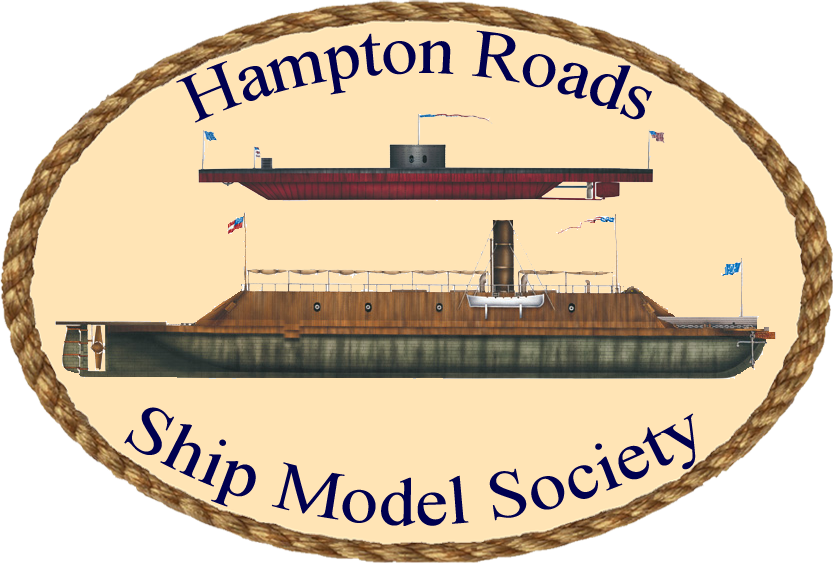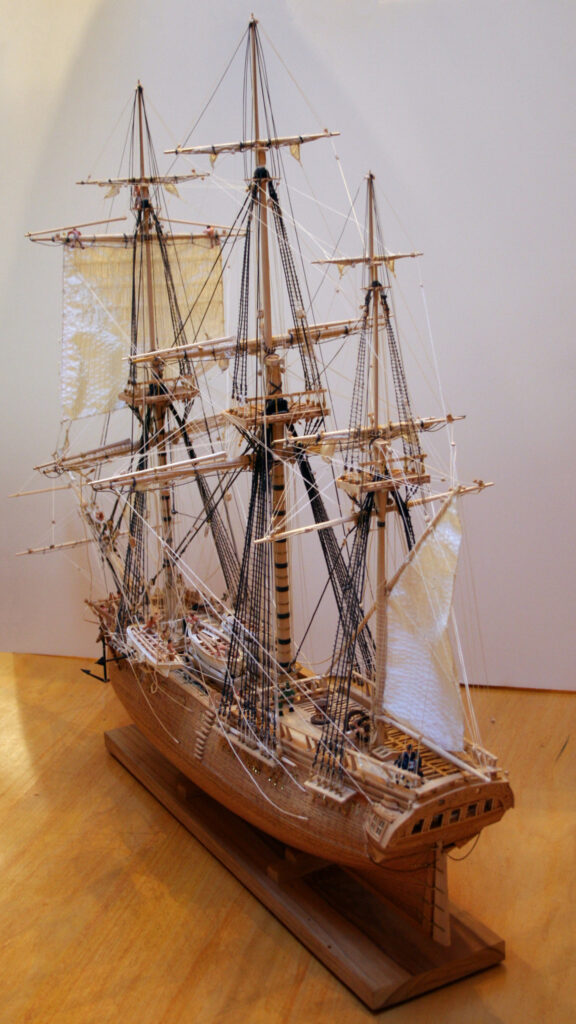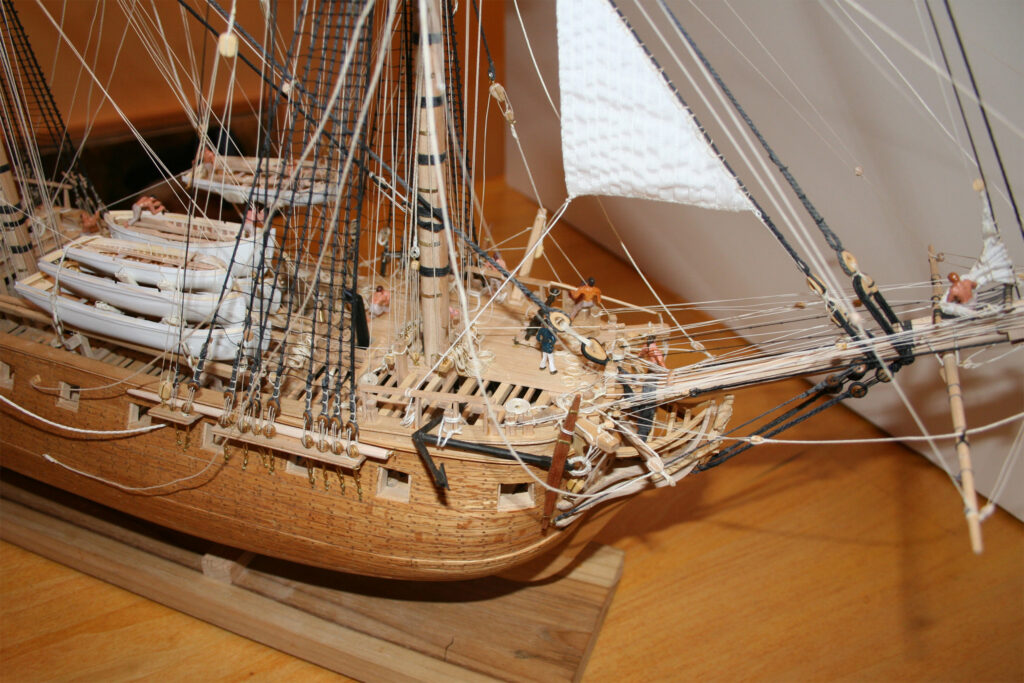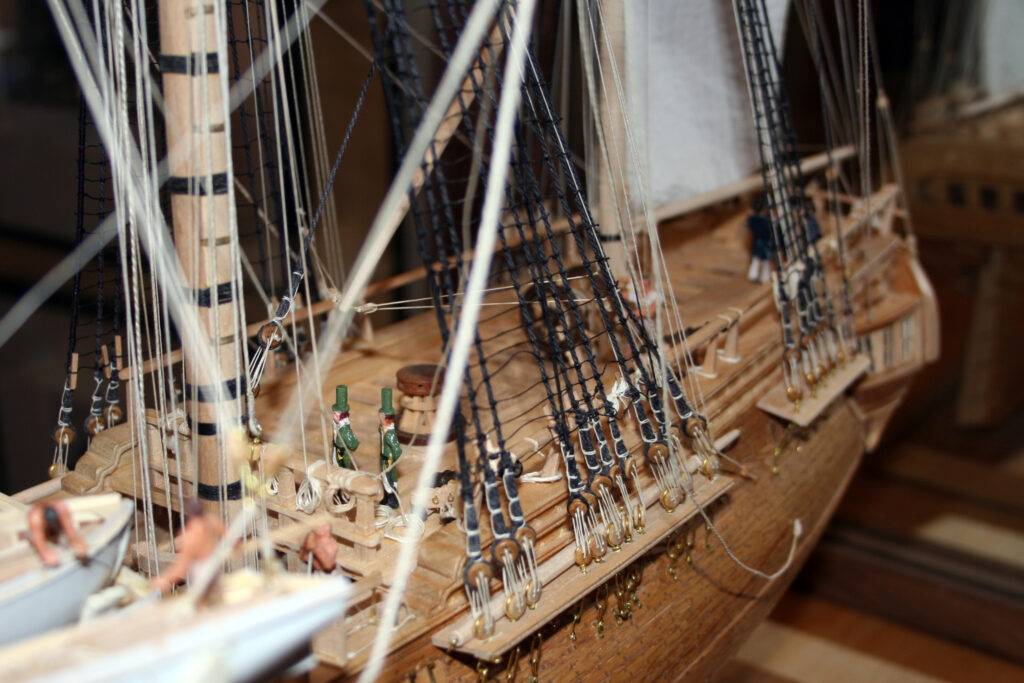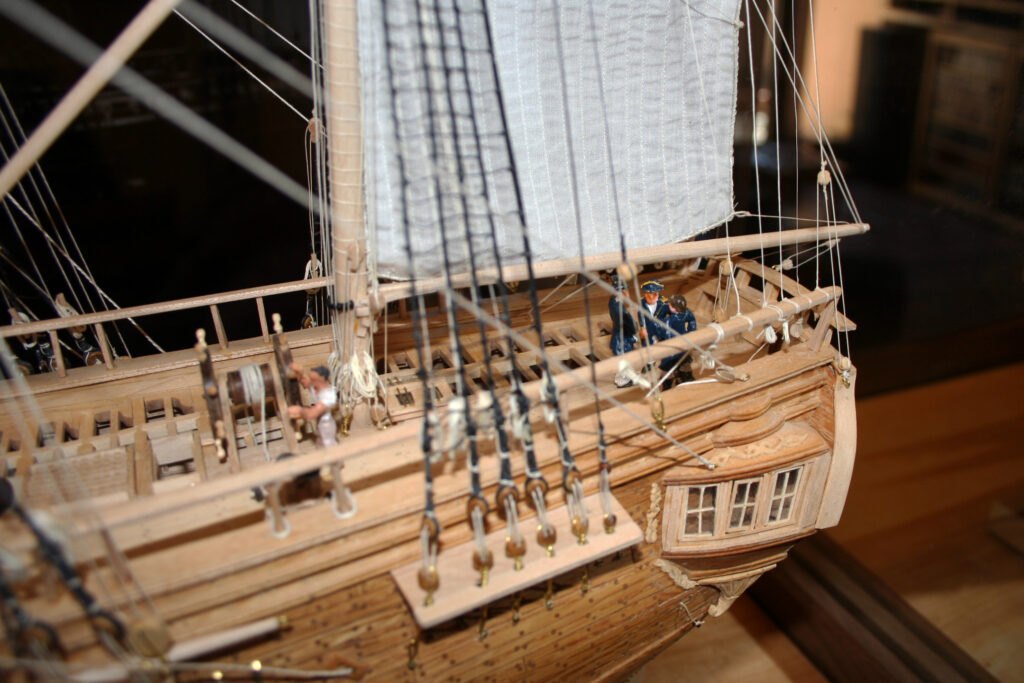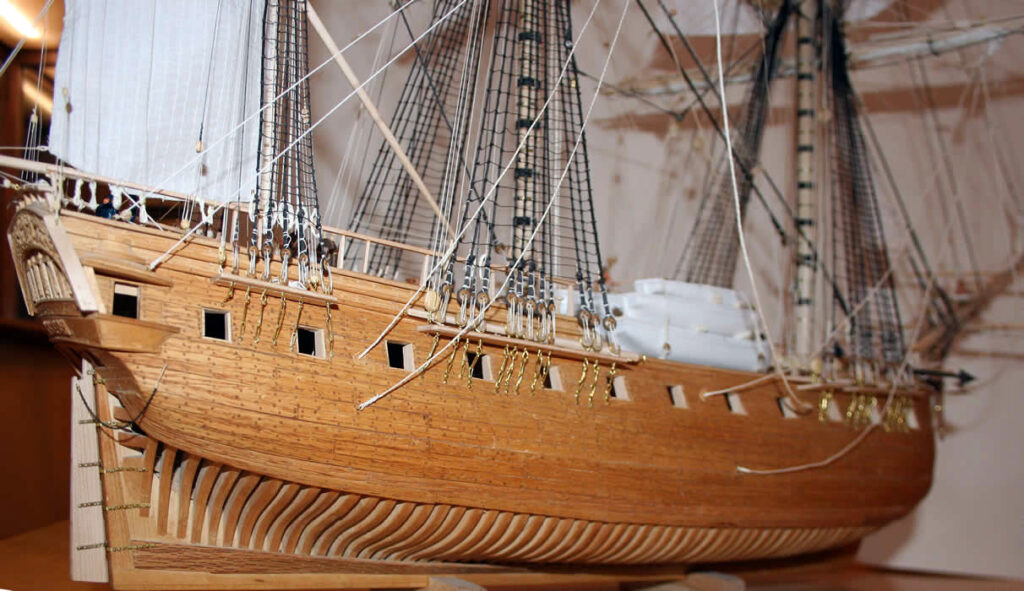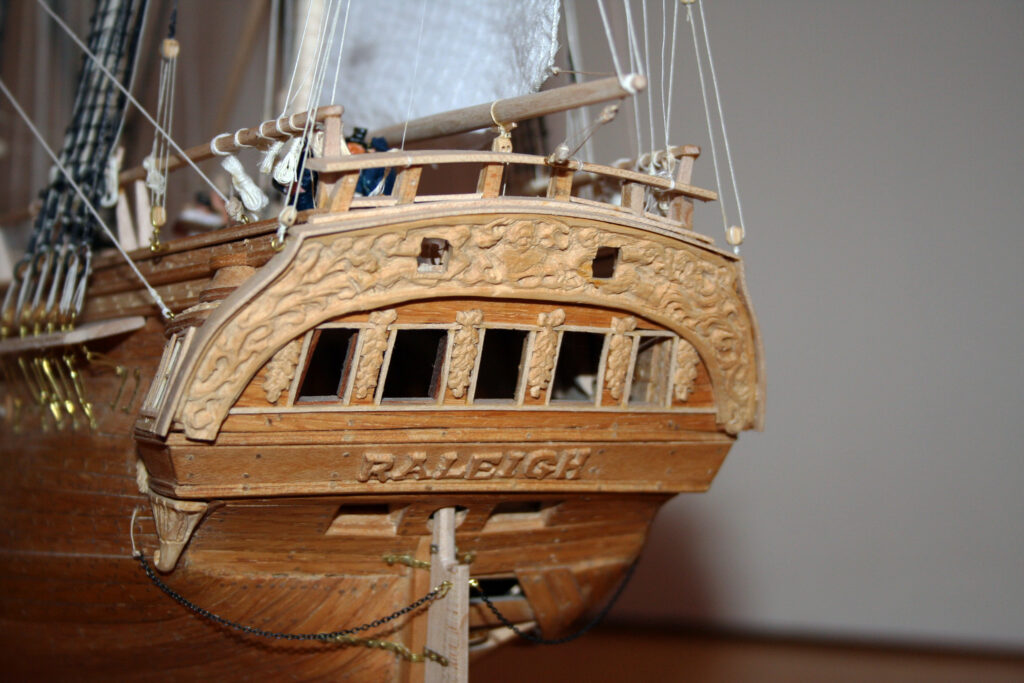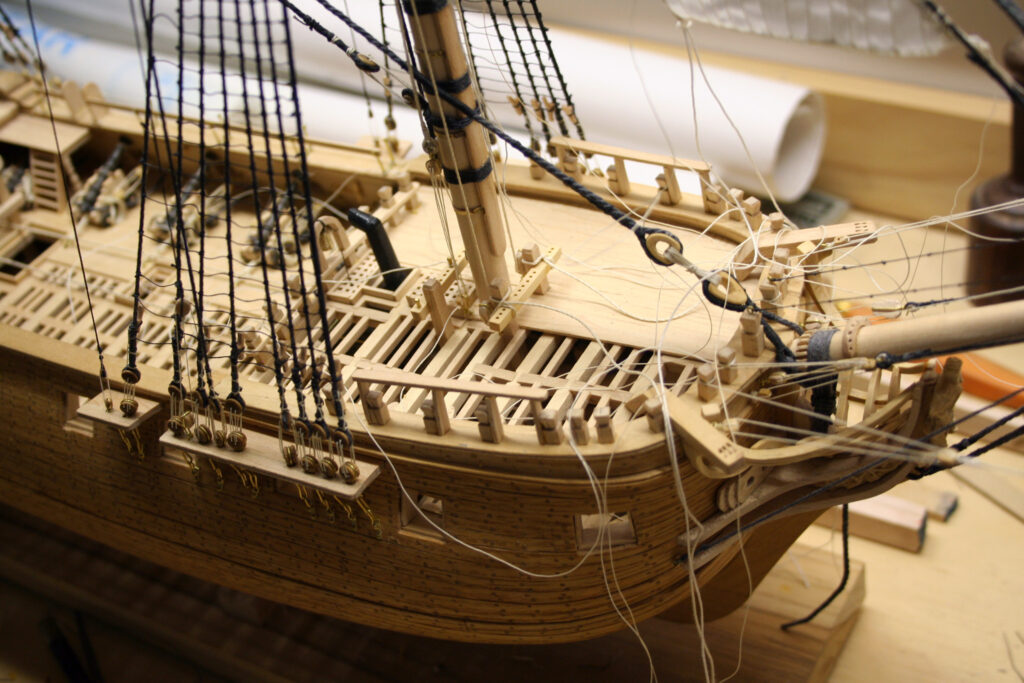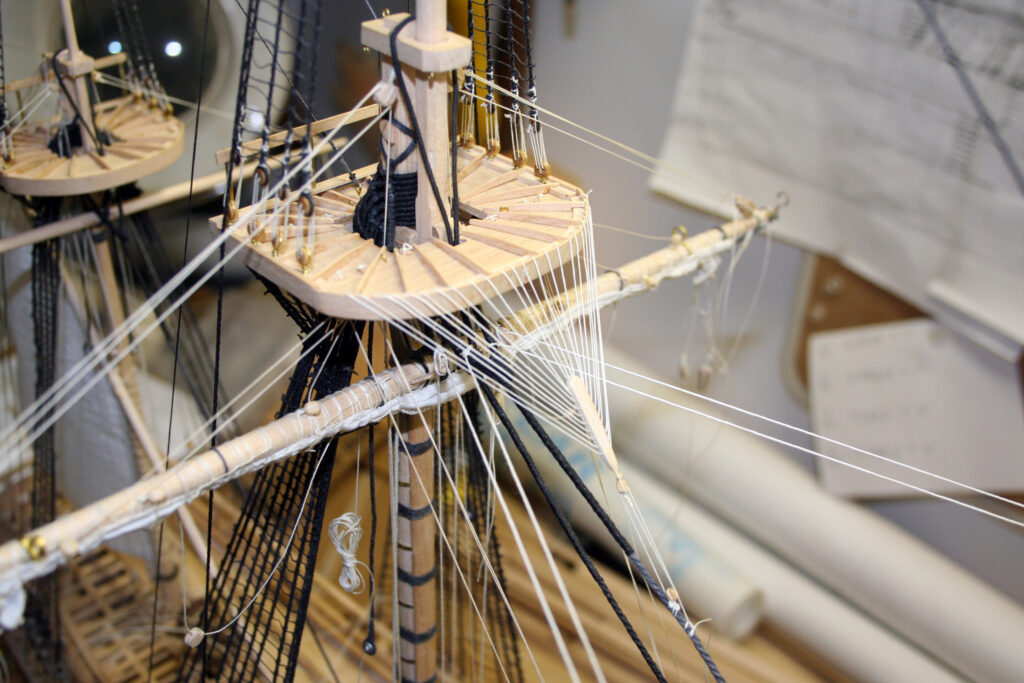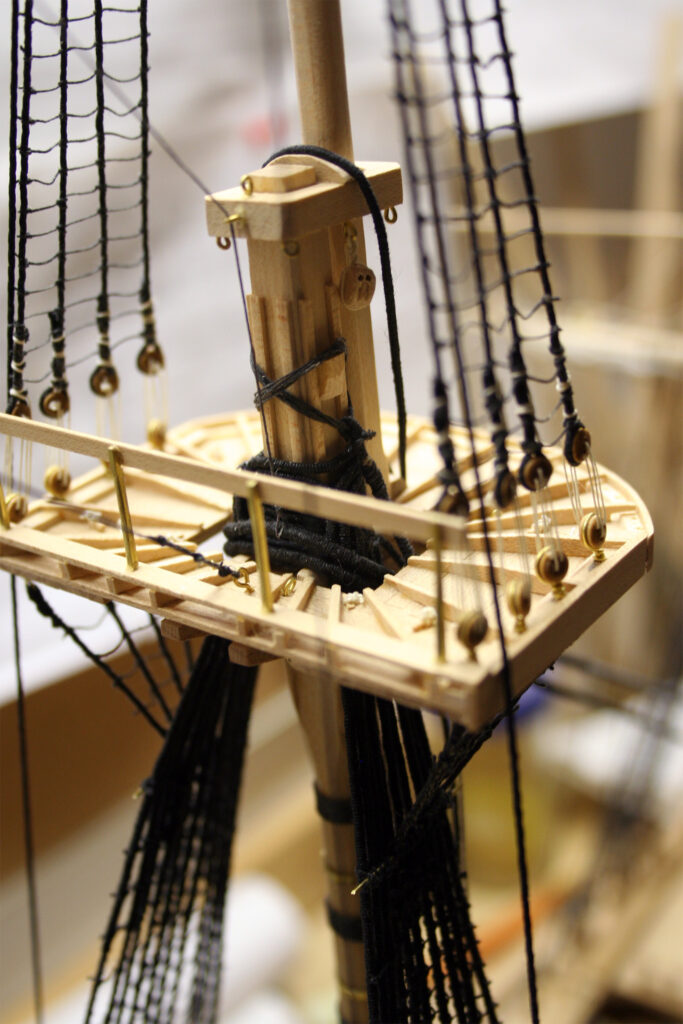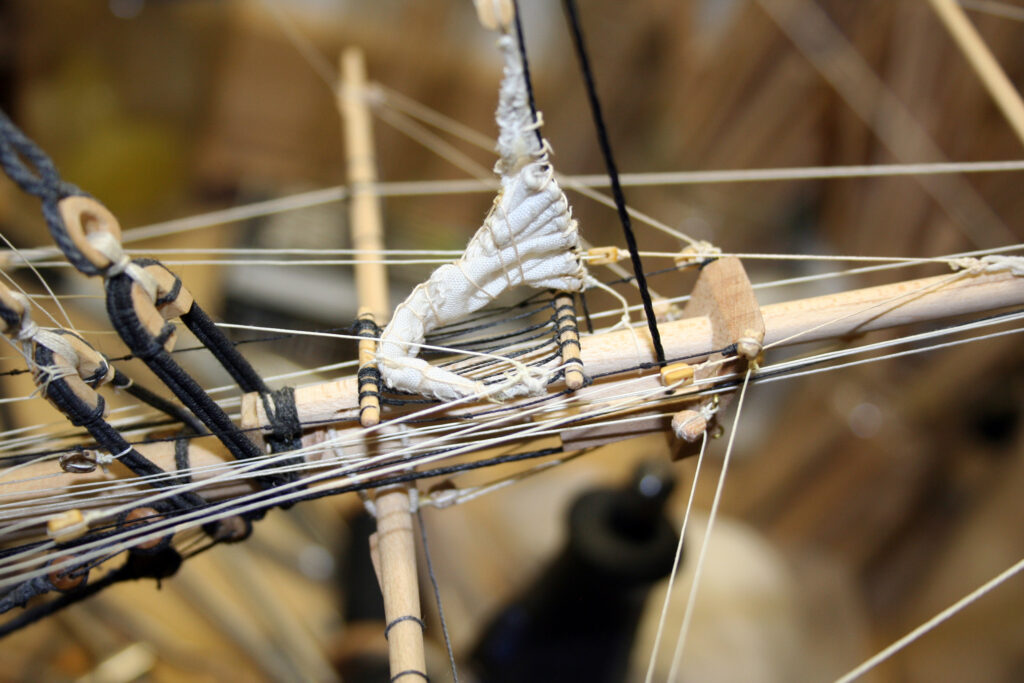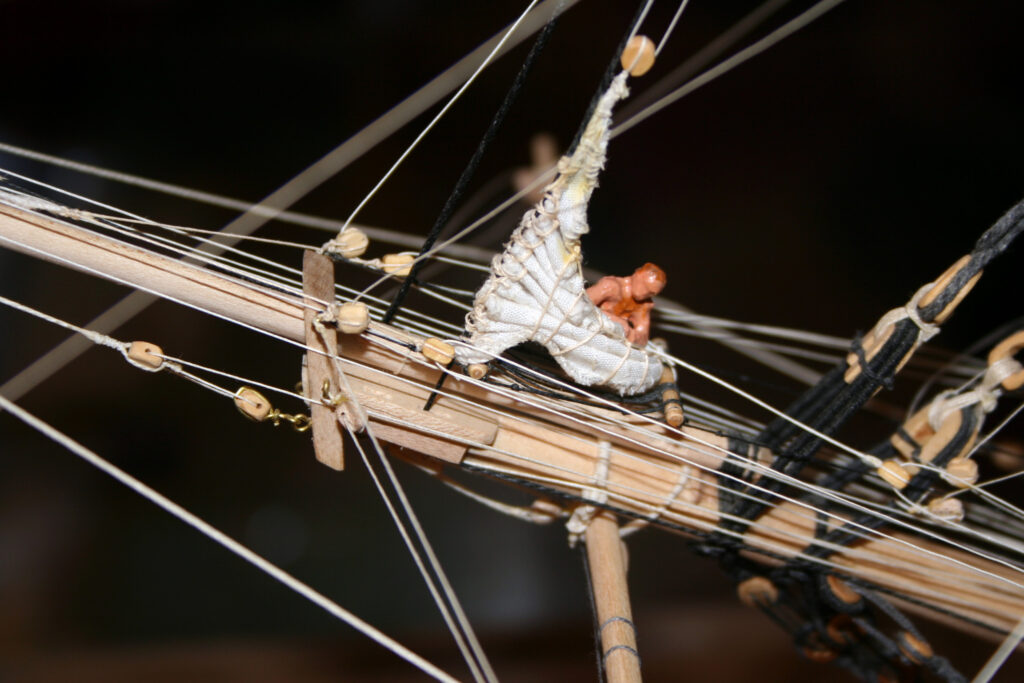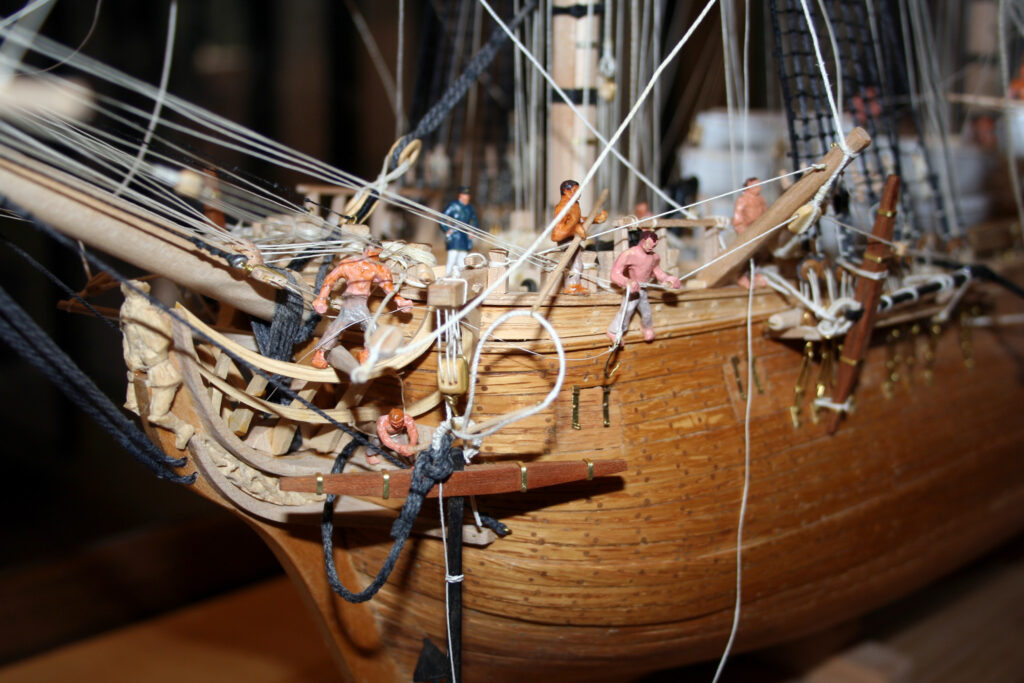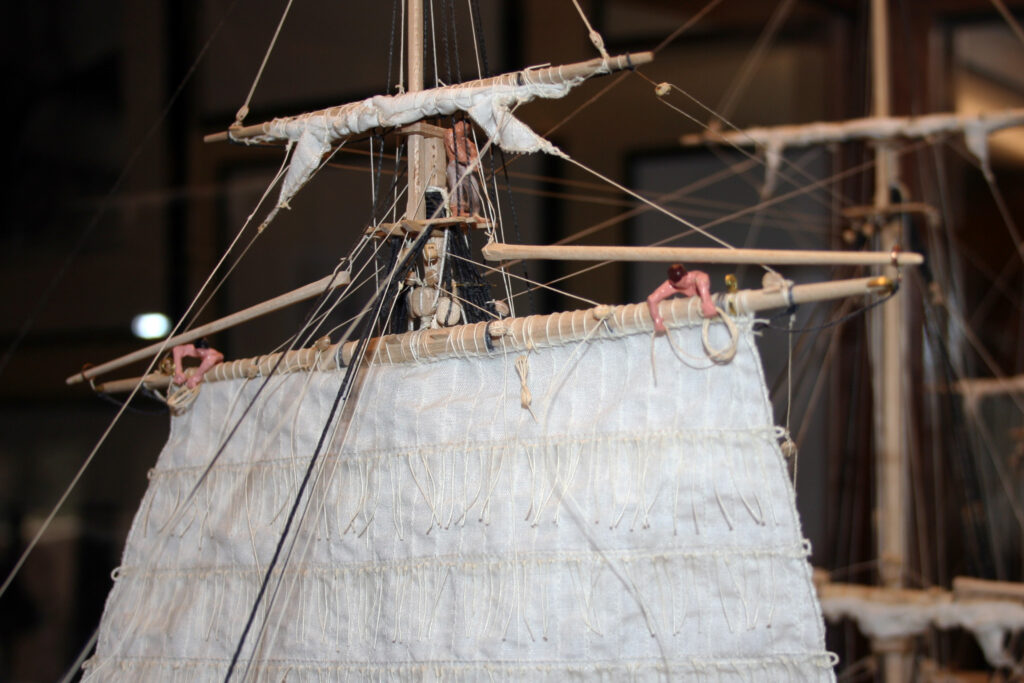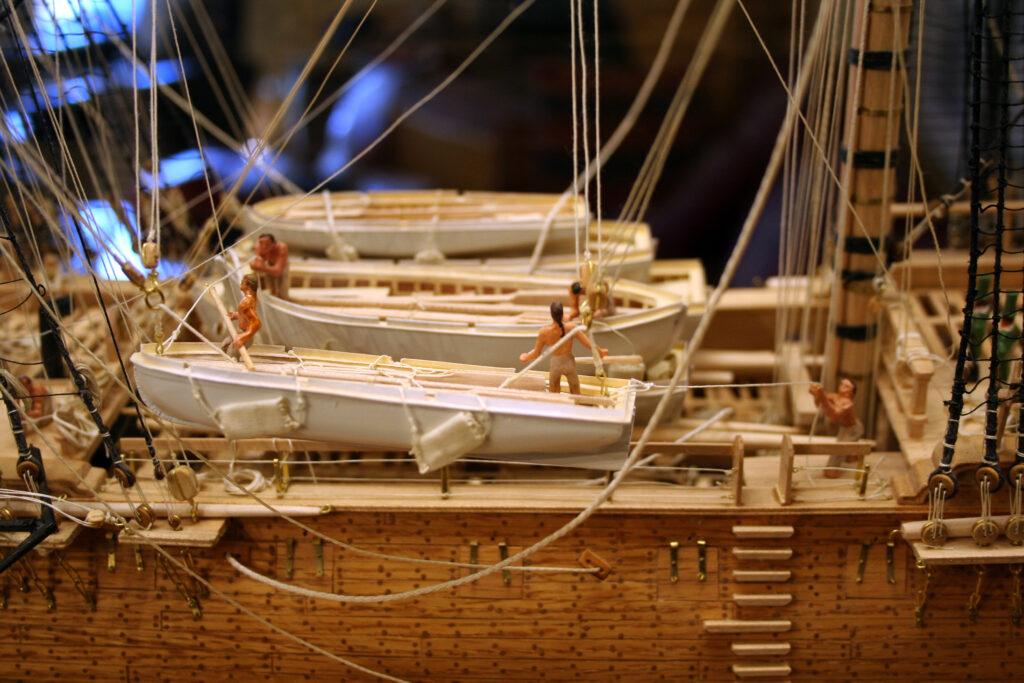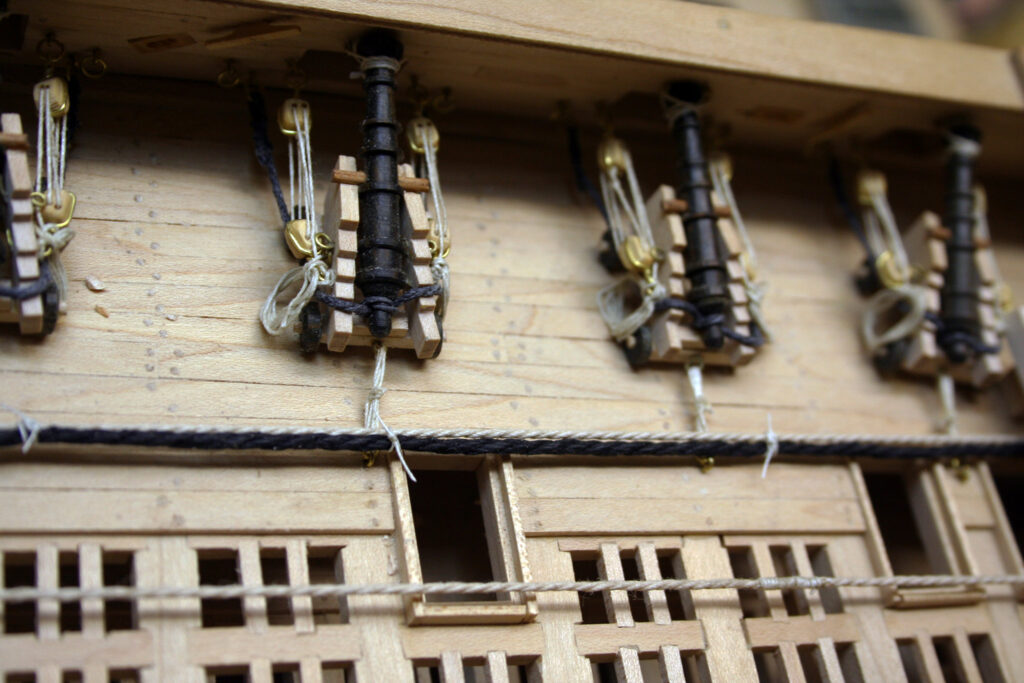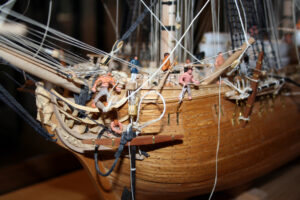
by Gene Andes
Categories:
- Build type: [Scratch]
- Material: [Wood]
- Scale: [1:64 (3/16" = 1')]
- Subject Type: [Frigate]
- Era: [1700-1815]
- Nationality: [United States]
- Propulsion: [Sail]
About the Vessel
Raleigh, a 32-gun frigate, was authorized by Continental Congress on 13 December 1775 at the shipyard of John Langdon on what is now Badger’s Island in Kittery, Maine. She was launched on May 21, 1776.
Her first tour of duty took her first to France, then to the African coast, back to the West Indies, and finally home to New England. Along the way she had several engagements with the British. We kindly refer you to the links below for more details.
Her second journey was to New Hampshire, where she was sighted and pursued by HMS Unicorn and HMS Experiment. After a 7-hour running battle, the enemy hauled off, but then re-engaged. Raleigh ran aground while attempting to withdraw toward land. The battle ended before the Raleigh’s crew could abandon and burn her to avoid capture. The British managed to re-float Raleigh, and she continued to serve through the rest of the war as HMS Raleigh.
Model Images
About the Model
The model is in 3/16” = 1 foot (1:64) scale. The original Hahn plans (1/8”=1ft) were enlarged, and the hull constructed in the “Hahn method”, that is, upside down on a building jig.
The frames are hard maple. The hull planked in red oak. Planks are fastened individually using wooden pegs as shown in the picture details. The deck beams and most detail work is maple. The stern carvings are boxwood. The boxwood was obtained from a neighbor in Virginia around 1996, when some American boxwood hedges were removed, dried for several years and milled to suitable dimension. Boxwood was also used for the carved figures of the crew and officers.
The masts and spars are hard maple. The cordage is made up from cotton threads using a home-built “rope machine”, the design for which is adapted from one used by Robert Sumrall at the US Naval Academy model shop.
The model is entirely scratch-built. No purchased fittings have been used. The ship is shown as she might have looked when setting out. The crew has weighed the anchor and are about to fish it at the cathead and stow it on the port-side channels. Other crew are bringing aboard the last remaining ship’s boat and stowing it, while foretopmen are stowing the ropes used to furl the foretopsail, which has just been released. The officers are on the quarterdeck reviewing orders. Two marines stand guard at the front of the quarterdeck.
The model is in a custom walnut case with acrylic glazing and LED lighting. External case dimensions are: 43″ wide x 38″ high x 18″ deep.
One nice thing about using the Hahn method, is that it is particularly good for models that may spend a great deal of time on the shelf or being moved about. I built a box to hold the model, much as Hahn described, and it served well to protect and store it over a three year construction hiatus.
Links
- Modeler’s personal website
- Dictionary of American Naval Fighting Ships
- Wikipedia
- Model of Constitution, another frigate from the War of Independence, also by Gene Andes
- Model of Virginia, another frigate from the War of Independence , by HRSMS member Jack Bobbitt
